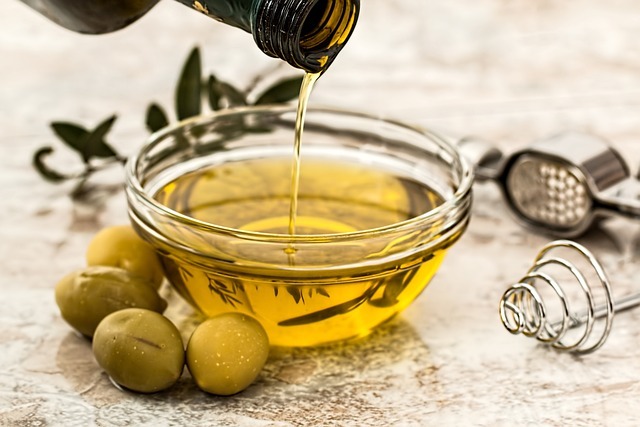Jun 6, 2023
Oil pulling is an ancient practice that has gained popularity in recent years due to its potential health benefits. This method involves swishing oil around in your mouth for a specific duration, typically in the morning, with the aim of promoting oral and overall health. In this article, we will delve into the details of how oil pulling works, its historical roots, and the science behind its efficacy.
What is Oil Pulling?
Ancient Practice
Oil pulling, also known as “kavala” or “gundusha,” is a traditional Ayurvedic practice that dates back thousands of years. Its roots can be traced to India, where it was used as a holistic remedy to treat various health issues. This ancient technique involves swishing edible oils, such as coconut, sesame, or sunflower oil, in the mouth for around 15-20 minutes, typically in the morning on an empty stomach. The oil is swirled around the mouth and between the teeth, and then it is spit out, ideally in a trash can or disposable container to prevent clogging of the drains.
The primary objective of oil pulling is to improve oral and overall health. Ayurvedic practitioners believe that it can help detoxify the body, alleviate various ailments, and promote general well-being. The concept revolves around the belief that the oral cavity is a microcosm of the entire body, with each section of the tongue and gums linked to different organs. By swishing the oil in the mouth, toxins are said to be drawn out, resulting in a healthier body.
The choice of oil for oil pulling varies, and each type may have unique benefits. Coconut oil is a popular choice due to its pleasant taste and potential antimicrobial properties. Sesame oil, known for its neutral flavor, is also commonly used and is believed to have a cooling effect on the body. Sunflower oil, though less frequently chosen, is another option. Regardless of the oil selected, the process remains consistent.
The practice of oil pulling has seen a resurgence in popularity in recent years as people seek alternative methods to improve their well-being and dental hygiene. Modern advocates of oil pulling claim that it can address a range of health issues beyond just oral care, including better digestion, skin health, and even weight loss. However, it’s important to note that scientific research on the efficacy of oil pulling is limited, and many of these claims lack robust scientific evidence.
While oil pulling is generally safe for most people, there are a few precautions to keep in mind. First and foremost, it’s crucial to use edible oils and avoid any oils that are not meant for consumption, as ingesting non-edible oils can be harmful. Additionally, individuals with allergies to specific oils should steer clear of them. Oil pulling should not replace regular dental care, such as brushing and flossing, and it is not a substitute for professional dental check-ups.
The process of oil pulling is relatively straightforward. To get started, take a tablespoon of your chosen edible oil and put it in your mouth. It’s best to do this on an empty stomach, preferably in the morning. Begin by swishing the oil around your mouth, moving it back and forth and through your teeth. As you swish, the oil will mix with saliva and gradually become thinner.
Proponents of oil pulling recommend swishing for about 15-20 minutes, but this duration can be adjusted according to personal comfort. It’s essential to swish gently and avoid swallowing the oil, as it may contain toxins and bacteria removed from the mouth. After the recommended swishing time, spit the oil into a disposable container or trash can, as it should not be disposed of in the sink or toilet to prevent potential clogs.
To finish the process, rinse your mouth thoroughly with warm water and then brush your teeth as you normally would. This helps remove any residual oil and maintains your oral hygiene routine. Over time, some people claim to experience improved oral health, fresher breath, and a reduction in plaque and gum issues through regular oil pulling.
In conclusion, oil pulling is an ancient Ayurvedic practice that has gained attention in recent years due to its potential health benefits. While it remains a holistic remedy with deep historical roots, its modern applications have expanded to include broader claims of improving overall well-being. However, it’s essential to approach oil pulling with a degree of skepticism, as scientific evidence supporting many of these claims is limited. Always consult with a healthcare professional before incorporating any new health practice into your routine to ensure it aligns with your specific needs and goals.
Methodology
The methodology of oil pulling is both straightforward and accessible. It involves the utilization of edible oils like coconut, sesame, or sunflower oil. The process can be initiated by taking a tablespoon of the selected oil and placing it in the mouth. Ideally, this should be done in the morning on an empty stomach. Once the oil is in your mouth, the key step is to swish it around, allowing it to pass through your teeth. This swishing motion is central to the entire practice, with the duration typically spanning from 15 to 20 minutes. It is during this period that the magic of oil pulling is believed to unfold, as the oil interacts with the various surfaces in your mouth.
The rationale behind this technique lies in the Ayurvedic belief that the oral cavity is intricately linked to the health of the entire body. Ayurvedic practitioners maintain that each section of the tongue and gums corresponds to different organs, and by swishing oil, toxins are drawn out, leading to a more profound state of well-being.
Oil pulling enthusiasts argue that the practice has an array of health benefits that extend beyond just oral hygiene. In fact, they claim it can improve digestion, enhance skin health, and even contribute to weight loss. However, it’s crucial to emphasize that robust scientific evidence supporting these claims is largely absent, and they should be viewed with a degree of skepticism.
Incorporating oil pulling into your daily routine is relatively simple, and here’s a step-by-step breakdown of the methodology:
- Select Your Oil: Choose an edible oil, such as coconut, sesame, or sunflower oil. These oils are commonly used for oil pulling due to their neutral or pleasant flavors.
- Time and Place: Perform oil pulling in the morning on an empty stomach. This is believed to be the most effective time for the practice.
- Take a Tablespoon: Measure a tablespoon of the chosen oil and place it in your mouth.
- Swish Gently: Begin swishing the oil around your mouth, ensuring that it reaches all areas, including between your teeth. The swishing process gradually mixes the oil with your saliva, causing it to become thinner.
- Swishing Duration: Most proponents recommend swishing for 15 to 20 minutes. However, you can adjust the duration according to your comfort level. It’s essential to swish gently, avoiding swallowing the oil.
- Spit Out: After the recommended swishing time, spit the oil into a disposable container or trash can. Avoid spitting it into the sink or toilet to prevent potential clogs.
- Rinse and Brush: Rinse your mouth thoroughly with warm water to remove any residual oil. Follow up with your regular toothbrushing routine to maintain oral hygiene.
By following these steps, some individuals claim to experience improved oral health, fresher breath, and a reduction in plaque and gum issues. However, as with any health practice, it’s advisable to consult with a healthcare professional before incorporating oil pulling into your routine, especially if you have specific health concerns or conditions. While oil pulling is generally safe for most people, it should complement, not replace, regular dental care.
Oils Used
When it comes to oil pulling, the choices of oils are as diverse as the potential health benefits they offer. Each type of oil used in this practice may provide unique advantages. Two of the most frequently selected oils for oil pulling are coconut oil and sesame oil, each with its own set of characteristics and potential benefits.
1. Coconut Oil: Coconut oil is a beloved choice among oil pullers for several compelling reasons. It boasts a mild, pleasant taste that makes the entire process more palatable. Beyond its agreeable flavor, coconut oil is believed to carry potential antibacterial and antiviral properties, which align with the fundamental purpose of oil pulling – detoxifying the oral cavity. This oil contains lauric acid, a medium-chain fatty acid known for its antimicrobial qualities, making it a suitable candidate for swishing within the mouth.
Coconut oil is also lauded for its natural ability to combat inflammation, which can be particularly beneficial for gum health. Additionally, it has a high smoke point, which means it can withstand higher temperatures without breaking down, making it a versatile choice for culinary applications as well.
2. Sesame Oil: Sesame oil, on the other hand, has a long history of use in Ayurvedic medicine, where it is valued for its therapeutic properties. It’s commonly chosen for oil pulling due to its neutral flavor, which may be less appealing to some than the mild sweetness of coconut oil but is still tolerable for most. This neutral taste makes it a versatile option for individuals who prefer to avoid any distinctive flavors during the process.
Sesame oil is rich in antioxidants and contains natural anti-inflammatory compounds, which can be advantageous for oral health. The oil’s anti-inflammatory properties may assist in reducing gum inflammation and promoting overall gum health. Additionally, it contains lignans, which are known for their potential to combat bacteria.
It’s important to note that while coconut and sesame oils are among the most popular choices, other oils like sunflower oil and olive oil can also be used for oil pulling. Sunflower oil is known for its neutral flavor and high oleic acid content, while olive oil carries its own set of potential health benefits due to its monounsaturated fat content and rich antioxidant profile. These alternative oils may have their own unique advantages and can be selected based on personal preference and specific health goals.
The choice of oil is a matter of personal preference and may depend on factors such as flavor, availability, and individual health concerns or objectives. Whether you opt for the tropical sweetness of coconut oil or the neutrality of sesame oil, the fundamental oil pulling process remains consistent. It’s essential to select an edible oil and ensure that it is suitable for consumption. The swishing and spitting technique, coupled with its potential health benefits, are the core elements of this ancient practice that have intrigued and engaged individuals in pursuit of enhanced oral and overall well-being.
How Does Oil Pulling Work?
Oil and Bacteria
At the heart of oil pulling lies a fundamental principle: the interaction between oil and the plethora of bacteria, fungi, and other microorganisms that inhabit our mouths. This ancient practice hinges on the idea that oil possesses a unique ability to bind with these unwelcome guests and, through a simple swishing action, evict them from the surfaces of our teeth and gums. The remarkable transformation that takes place within the mouth during this process provides insight into its potential benefits.
1. Binding to Harmful Microorganisms: The magic of oil pulling begins with the selected edible oil in your mouth. This oil acts as a magnet, attracting and binding to the diverse microorganisms that call your oral cavity home. Harmful bacteria, fungi, and other unwanted guests are no match for the oil’s natural affinity for them. This binding process is pivotal to the detoxification goal of oil pulling, as it captures and immobilizes these microorganisms, preventing them from causing potential harm.
2. Swishing Action: The key to oil pulling’s effectiveness lies in the swishing action. As you move the oil around in your mouth, it penetrates every nook and cranny, reaching the spaces between your teeth and gums. This dynamic swishing action dislodges and loosens the microorganisms from their hiding places. It’s as if a microscopic battle is taking place within your mouth, with the oil acting as a formidable ally against these intruders.
3. Thinning and Whitening: As you continue to swish the oil, you might notice a fascinating transformation occurring. The oil gradually mixes with your saliva, causing it to become thinner and turn whitish in color. This change is often considered a visual cue that the oil is actively absorbing toxins and impurities from your mouth. It’s a tangible reminder of the cleansing process underway. The oil, once clear and dense, now carries the evidence of its hard work in the form of a milky appearance.
The belief in the effectiveness of oil pulling is grounded in the idea that as the oil binds with microorganisms, it pulls them away from the surfaces of your teeth and gums. This not only contributes to the detoxification of the oral cavity but also plays a role in potentially preventing oral health issues. By reducing the presence of harmful bacteria and fungi, oil pulling enthusiasts claim that it can lead to fresher breath, reduced plaque formation, and healthier gums.
While these claims are intriguing, it’s essential to keep in mind that scientific evidence supporting the specific mechanisms and efficacy of oil pulling is limited. The visual cues, like the thinning and whitening of the oil, offer a tangible representation of the process, but they should be considered as anecdotal rather than concrete evidence.
In conclusion, oil pulling is a holistic practice that involves the binding of oil to bacteria and microorganisms in the mouth, followed by a swishing action to dislodge and remove them. The change in the oil’s consistency and color during the process serves as a visible indicator of its interaction with these unwanted guests. While many individuals report improved oral health and overall well-being through oil pulling, it’s important to approach these claims with a degree of skepticism and consider them within the context of limited scientific research on the topic.
Detoxification Process
he core essence of oil pulling, beyond its ancient roots and holistic aspirations, lies in its perceived role as a detoxification process. This intriguing facet of the practice is predicated on the belief that the oil employed acts as a magnet, latching onto bacteria, fungi, and other undesirable microorganisms that inhabit the oral cavity.
1. Capturing Toxins: As you commence oil pulling by swishing a tablespoon of your chosen edible oil in your mouth, the process initiates with the oil’s remarkable ability to capture these unwanted inhabitants. Harmful bacteria, fungi, and toxins adhere to the oil’s molecular structure, enabling their removal from the surfaces of your teeth, gums, and the crevices in between. In this manner, the oil serves as a natural and gentle cleanser, binding with these toxins without the need for harsh chemicals or abrasive compounds.
2. Swishing Action and Liberation: The swishing action that follows is where the transformation truly takes place. As you move the oil around your mouth, the battle unfolds within your oral environment. The oil penetrates every hidden recess, effectively dislodging the unwelcome microorganisms from their entrenched positions. The swishing action acts as a liberator, shaking these microorganisms loose and exposing them to the oil’s cleansing power.
3. The Crucial Spit: Upon completing the swishing process, it is imperative to spit out the oil. This step is not to be overlooked or taken lightly. Spitting out the oil, ideally into a disposable container or trash can, is the linchpin of the detoxification process. It marks the moment when the captured toxins are expelled from your body, ensuring they do not find their way back into your system. It’s a tangible and visual manifestation of the cleansing that has occurred within your mouth.
The act of spitting out the oil is a symbolic release of what the oil has entrapped during the swishing process. It signifies the culmination of the detoxification process within the oral cavity, as the harmful microorganisms and toxins are removed from your system through this simple yet vital action.
While the concept of detoxification through oil pulling is embraced by many enthusiasts, it’s essential to recognize that scientific evidence supporting this notion is limited. The visible cues, such as the change in the oil’s consistency and the belief in its ability to capture toxins, are foundational to the practice. However, they should be regarded as anecdotal rather than concrete proof.
In summary, oil pulling is often regarded as a detoxification process, with the oil acting as a natural cleanser that captures toxins and microorganisms in the oral cavity. The swishing action liberates these unwanted guests, and the act of spitting out the oil represents the tangible release of captured toxins. While this concept is central to the practice, it should be considered within the context of limited scientific research on the topic.
Oral Health Benefits
A fundamental motivation for embracing the age-old tradition of oil pulling is the promise of enhanced oral health. This practice, rooted in Ayurveda, has garnered considerable attention for its potential to bestow a range of benefits upon the mouth and its components. From addressing the perennial issue of bad breath to thwarting the onset of tooth decay and nurturing gum health, oil pulling is celebrated for its oral health merits.
1. Bad Breath Banishment: Bad breath, or halitosis, can be a persistent concern for many individuals. Oil pulling has emerged as a natural and holistic remedy to combat this common issue. The process of swishing edible oils in the mouth is believed to eradicate the foul-smelling bacteria that contribute to unpleasant breath. As the oil captures and removes these odor-causing culprits, it leaves behind a mouth that feels and smells notably fresher.
2. Tooth Decay Prevention: Tooth decay, a dental woe that plagues many, finds itself at odds with the practice of oil pulling. The binding properties of the oil, wherein it clings to harmful bacteria and microorganisms, are thought to play a pivotal role in preventing the formation of cavities. By reducing the presence of these destructive agents, oil pullers aim to protect their teeth from the erosive forces that lead to decay.
3. Gum Guardianship: The gums, often overshadowed in oral health discussions, are beneficiaries of oil pulling’s attention. Gum health is a crucial aspect of overall oral well-being, and the swishing action involved in oil pulling contributes to its preservation. By dislodging harmful microorganisms and toxins from the gums, this practice is thought to reduce inflammation and promote the vitality of the gingival tissues. Healthy gums not only enhance the aesthetics of a smile but also provide essential support to the teeth.
4. A Gleaming Smile: An added perk that some individuals have reported is whiter teeth. Although the primary focus of oil pulling is not teeth whitening, many users have experienced a brightening effect on their teeth as a result of this practice. This change is attributed to the removal of surface stains and the elimination of bacteria responsible for discoloration. It’s worth noting that while oil pulling may contribute to a whiter smile, its primary goal is to improve oral health.
5. Holistic Oral Hygiene: The amalgamation of these benefits culminates in an overall improvement in oral hygiene. Oil pulling provides a holistic and chemical-free approach to maintaining the well-being of your mouth. It is seen as a complementary practice to regular dental care, reinforcing the importance of brushing, flossing, and professional check-ups.
While many individuals report experiencing these oral health advantages through oil pulling, it’s important to recognize that scientific research on the topic is still developing, and specific claims should be viewed with a degree of skepticism. The true merits of this practice may vary from person to person and depend on factors such as the chosen oil and individual oral health conditions.
It aims to combat bad breath, prevent tooth decay, nurture gum health, and, in some cases, contribute to a whiter smile. As with many holistic practices, the efficacy of oil pulling should be considered within the context of ongoing scientific research and individual experiences.
Beyond Oral Health
While oil pulling’s primary sphere of influence revolves around oral health, a growing number of proponents assert that its potential benefits extend beyond the confines of the mouth. These purported advantages encompass a variety of aspects, including skin health, digestion, and immune system support, yet it’s crucial to approach these assertions with an awareness of the limited scientific evidence available.
1. Skin Health Enhancement: Advocates of oil pulling suggest that the practice can contribute to a clearer and more radiant complexion. The reasoning behind this claim is tied to the idea that by reducing the overall toxic load in the body through oil pulling, skin issues stemming from internal imbalances may be alleviated. Detoxifying the body from within, it is believed, can lead to a healthier and more vibrant external appearance.
2. Digestive Harmony: Some proponents of oil pulling maintain that the practice can positively influence digestive health. The process is thought to stimulate the digestive system, leading to improved nutrient absorption and more efficient waste elimination. While these claims are intriguing, it’s essential to remember that the digestive system is complex, and the relationship between oil pulling and digestion remains an area where more research is needed.
3. Immune System Support: The potential immune-boosting effects of oil pulling have also garnered attention. It is posited that by reducing the toxic load and the burden on the immune system caused by oral pathogens, the body’s defense mechanisms can operate more effectively. However, it’s important to view these claims within the context of the broader picture of immune health, including factors such as diet, exercise, and genetics.
In summary, oil pulling enthusiasts are quick to highlight the broader health benefits that may result from this practice. While the focus remains primarily on oral health, the potential improvements in skin health, digestion, and immune system function are areas that continue to pique the interest of those who seek a holistic approach to well-being. Nevertheless, it’s essential to approach these claims with the understanding that scientific evidence in support of these broader health benefits is limited, and individual experiences may vary.
How to Do Oil Pulling
Choosing the Right Oil
Selecting the right oil is crucial for a successful oil pulling routine. As mentioned earlier, coconut and sesame oil are popular choices. Ensure the oil you use is organic, cold-pressed, and free from additives. It’s essential to pick an oil that you are comfortable with as you will be swishing it in your mouth for an extended period.
The Oil Pulling Routine
To get the most out of oil pulling, follow these steps:
- Start in the morning on an empty stomach.
- Take a tablespoon of your chosen oil.
- Swish the oil around your mouth for 15-20 minutes.
- Spit out the oil (avoid swallowing it) into a trash can, as it may clog pipes.
- Rinse your mouth with warm water.
- Brush your teeth as usual.
Safety Considerations
Oil pulling, an ancient holistic practice with roots in Ayurveda, is often viewed as a safe and gentle method to promote oral and potential overall well-being. However, like any health practice, it is not without its considerations and precautions. Understanding these safety factors is essential to ensure that oil pulling is a harmonious addition to your self-care routine.
1. Complementary, Not Substitutive: Perhaps the most vital safety consideration is the understanding that oil pulling should complement rather than substitute for regular dental care. While it can be a valuable addition to your oral hygiene regimen, it should not replace essential dental practices like brushing, flossing, and professional check-ups. Maintaining a balanced approach to oral health is key to reaping the full benefits of oil pulling.
2. Allergies and Preexisting Conditions: Individuals with a history of allergies to specific oils should exercise caution when selecting the oil for their oil pulling practice. Allergic reactions can range from mild to severe, and it’s important to consult a healthcare professional for guidance. While coconut, sesame, and sunflower oils are commonly used for oil pulling and tend to be well-tolerated, it’s crucial to prioritize your safety if you have known sensitivities or allergies.
3. Gradual Adaptation: The process of oil pulling, while straightforward, can be new to your system. Some individuals may experience mild side effects during their initial attempts, including an upset stomach or a gag reflex. To mitigate these effects, it’s advisable to start with a shorter swishing time and gradually increase it as your comfort level improves. Beginning with 5-10 minutes and gradually progressing to the recommended 15-20 minutes can make the practice more manageable. It’s essential to listen to your body and adapt the swishing duration to your individual needs.
4. Disposal Considerations: A practical safety aspect of oil pulling pertains to the disposal of the used oil. To prevent potential clogs in your plumbing system, it’s vital to spit the used oil into a disposable container or trash can. Avoid spitting it into the sink or toilet, as the oil may solidify and lead to drainage issues over time.
5. Caution During Pregnancy: For pregnant individuals, an extra layer of caution may be warranted. While there is limited research on the safety of oil pulling during pregnancy, it’s advisable to consult with a healthcare provider before incorporating it into your routine. This precaution can help ensure that oil pulling aligns with your unique health circumstances.
In summary, oil pulling is generally considered safe, but several important safety considerations must be observed. It should be viewed as a complementary practice to conventional oral care, and individuals with allergies or preexisting conditions should consult healthcare professionals. Gradual adaptation to the swishing process, proper disposal of used oil, and extra caution during pregnancy are also crucial aspects of ensuring a safe and effective oil pulling experience.
Scientific Evidence
Clinical Studies
Scientific research on oil pulling is limited, and more studies are needed to fully understand its effects. Some small-scale studies have suggested that it may help reduce oral bacteria and inflammation. However, further research is required to confirm these findings.
Expert Opinions
The practice of oil pulling, deeply rooted in Ayurvedic tradition, has been a subject of interest for experts in various fields, particularly dentistry and holistic medicine. While the scientific research on oil pulling is still emerging, many experts and practitioners acknowledge its potential benefits, particularly in the realm of oral health. Their insights provide valuable guidance for individuals looking to incorporate oil pulling into their health routines.
Dentistry Perspectives:
Dentists, as custodians of oral health, often find themselves at the forefront of discussions surrounding practices like oil pulling. Many dental professionals acknowledge the potential advantages of oil pulling as a supplementary method to maintain oral hygiene. While oil pulling should not replace essential dental practices like brushing, flossing, and professional check-ups, it can serve as a valuable addition to an individual’s oral care routine.
From a dental perspective, oil pulling is seen as a holistic and chemical-free approach that may help reduce the presence of harmful bacteria and plaque in the mouth. This reduction, in turn, may lead to fresher breath, healthier gums, and potentially a reduced risk of dental issues like cavities and gum disease. Dentists often recommend that individuals discuss their interest in oil pulling with their dental healthcare providers, who can provide tailored advice based on their unique oral health needs.
Holistic Medicine Insights:
Holistic medicine practitioners, who consider the interconnectedness of the body and its various systems, also view oil pulling through a positive lens. They see it as a holistic practice that aligns with the principles of detoxification and the reduction of overall toxic load in the body.
From this perspective, oil pulling is believed to promote not only oral health but also potential improvements in overall well-being. By addressing the potential reduction of harmful microorganisms and toxins in the mouth, holistic experts suggest that the body’s immune system may operate more efficiently, contributing to better overall health. While these claims are promising, it’s essential to remember that the scientific evidence supporting these assertions is limited, and the practice should be considered as one aspect of a holistic approach to well-being.
Integration with Expert Opinions:
The synergy between expert opinions from the dental and holistic medicine realms lies in their recognition of oil pulling as a complementary practice. While experts acknowledge the potential benefits of oil pulling for oral health, they emphasize that it should work in tandem with established dental care practices and should not replace them. This collaborative approach allows individuals to harness the potential advantages of oil pulling while ensuring that their oral health remains a priority.
Tips for Successful Oil Pulling
Consistency is Key
To experience the potential benefits of oil pulling, consistency is crucial. Make it a daily routine, preferably in the morning, and be patient. Results may not be immediate, but over time, you may notice improvements in your oral health.
Common Mistakes to Avoid
While oil pulling is generally a safe and straightforward practice, there are some common mistakes that newcomers and even seasoned practitioners should be aware of. These mistakes, if not rectified, can hinder the effectiveness of the practice and may lead to suboptimal results. By understanding and avoiding these pitfalls, you can make the most of your oil pulling routine and maximize its potential benefits.
1. Swallowing the Oil: One of the most critical mistakes to avoid is accidentally swallowing the oil during the swishing process. The oil you use for oil pulling captures bacteria and toxins from your mouth, and swallowing it can reintroduce these impurities into your digestive system. It’s vital to remember that the oil is now laden with substances you want to expel, so avoid swallowing it at all costs.
2. Low-Quality Oils: The choice of oil plays a pivotal role in the success of your oil pulling practice. Using low-quality or non-edible oils can lead to adverse effects. It’s essential to select high-quality, edible oils like coconut, sesame, or sunflower oil. Opt for oils that are free from additives and preservatives. Using oils of dubious quality can introduce unwanted substances into your mouth and body, counteracting the goals of oil pulling.
3. Insufficient Swishing Time: Inadequate swishing time is another common mistake. The recommended swishing duration for oil pulling is typically 15 to 20 minutes. Some individuals may become impatient and swish for a shorter period, which may not be sufficient to effectively capture and remove harmful microorganisms and toxins. To maximize the benefits of oil pulling, it’s important to stay committed to the recommended time frame. If 20 minutes initially feels daunting, you can start with a shorter duration and gradually increase it as you become more accustomed to the process.
4. Inconsistency: Oil pulling is most effective when practiced consistently. Some individuals may make the mistake of starting and stopping the practice without establishing a routine. To reap the potential benefits, it’s crucial to incorporate oil pulling into your daily or weekly schedule. Regularity is key to seeing long-term improvements in oral and potential overall health.
5. Incorrect Disposal: Proper disposal of the used oil is often overlooked. To prevent potential plumbing issues, it’s vital to spit out the oil into a disposable container or trash can, rather than the sink or toilet. This responsible disposal method ensures that the oil does not solidify and clog your drainage system.
6. Overloading with Oil: Using an excessive amount of oil during oil pulling is another mistake to avoid. A tablespoon of oil is typically sufficient for the process. Using too much oil may lead to discomfort and difficulty in swishing effectively. It’s essential to use the recommended amount to ensure a comfortable and productive oil pulling experience.
Oil Pulling and Overall Health
Beyond its well-recognized role in oral health, oil pulling is often celebrated as a holistic practice that may potentially impact your overall well-being. While it’s not a panacea for all health issues, many individuals are drawn to the idea that oil pulling can contribute to a broader sense of vitality and balance. Here, we delve into how this practice aligns with the principles of holistic well-being and serves as a complementary component of your existing health routines.
1. Holistic Principles: The foundation of holistic well-being revolves around the interconnectedness of the body, mind, and spirit. Holistic practices like oil pulling are rooted in the belief that enhancing one aspect of health can positively affect other areas. In the context of oil pulling, the focus on detoxification and reducing harmful microorganisms in the mouth is believed to extend its influence to other bodily systems, aligning with holistic principles.
2. Reducing Toxic Load: One of the central tenets of holistic health is the reduction of the body’s toxic load. Oil pulling is perceived as a practice that contributes to this reduction by capturing and removing toxins and harmful microorganisms from the oral cavity. The idea is that by minimizing the overall toxic burden on the body, it can operate more efficiently and achieve a state of equilibrium. This alignment with detoxification principles is a driving force behind oil pulling’s appeal to holistic health enthusiasts.
3. Potential Immune System Support: Holistic health advocates also point to the potential immune-boosting effects of oil pulling. By reducing the presence of harmful microorganisms and toxins in the mouth, it is believed that the body’s immune system may operate more effectively. This effect on immune function is viewed as a crucial aspect of holistic well-being, as a robust immune system is essential for overall health and vitality.
4. Mind-Body Connection: Holistic health places a strong emphasis on the mind-body connection. Practices like oil pulling, while primarily focused on the physical aspect of health, can have indirect effects on mental well-being. Individuals who incorporate oil pulling into their routines often report a sense of mindfulness and self-care. The act of dedicating time to the practice can promote relaxation and a holistic approach to health.
5. Complementing Existing Health Routines: A key point to remember is that oil pulling should be considered a complementary practice to your existing health routines. It is not a substitute for essential practices such as regular dental care, a balanced diet, exercise, and other health-promoting activities. Holistic health embraces a comprehensive approach to well-being, and oil pulling can be a valuable addition to your holistic toolkit.
Conclusion
Incorporating oil pulling into your daily routine can be a simple and cost-effective way to potentially improve your oral health. While it has been used for centuries and has gained a dedicated following, it’s essential to approach it with realistic expectations and continue regular dental care. It is a holistic and cost-effective addition to your daily routine, aligning with detoxification principles and the reduction of harmful microorganisms. However, it’s important to approach oil pulling with realistic expectations and to maintain regular dental care as an essential cornerstone of your oral health journey. By combining these elements, you can foster a state of oral well-being that reflects the wisdom of ancient traditions and the insights of modern dental care.
Frequently Asked Questions (FAQs)
- Is oil pulling a replacement for regular brushing and flossing? Oil pulling is not a substitute for regular oral hygiene practices. It should be used in conjunction with brushing and flossing.
- Can I use any type of oil for oil pulling? While various oils can be used, it’s recommended to use edible, organic, and cold-pressed oils such as coconut or sesame for the best results.
- How long should I swish the oil during an oil pulling session? Aim for 15-20 minutes of swishing to allow the oil to effectively bind to oral bacteria.
- Can oil pulling cure diseases or provide significant health benefits beyond oral health? While some people claim broader health benefits















